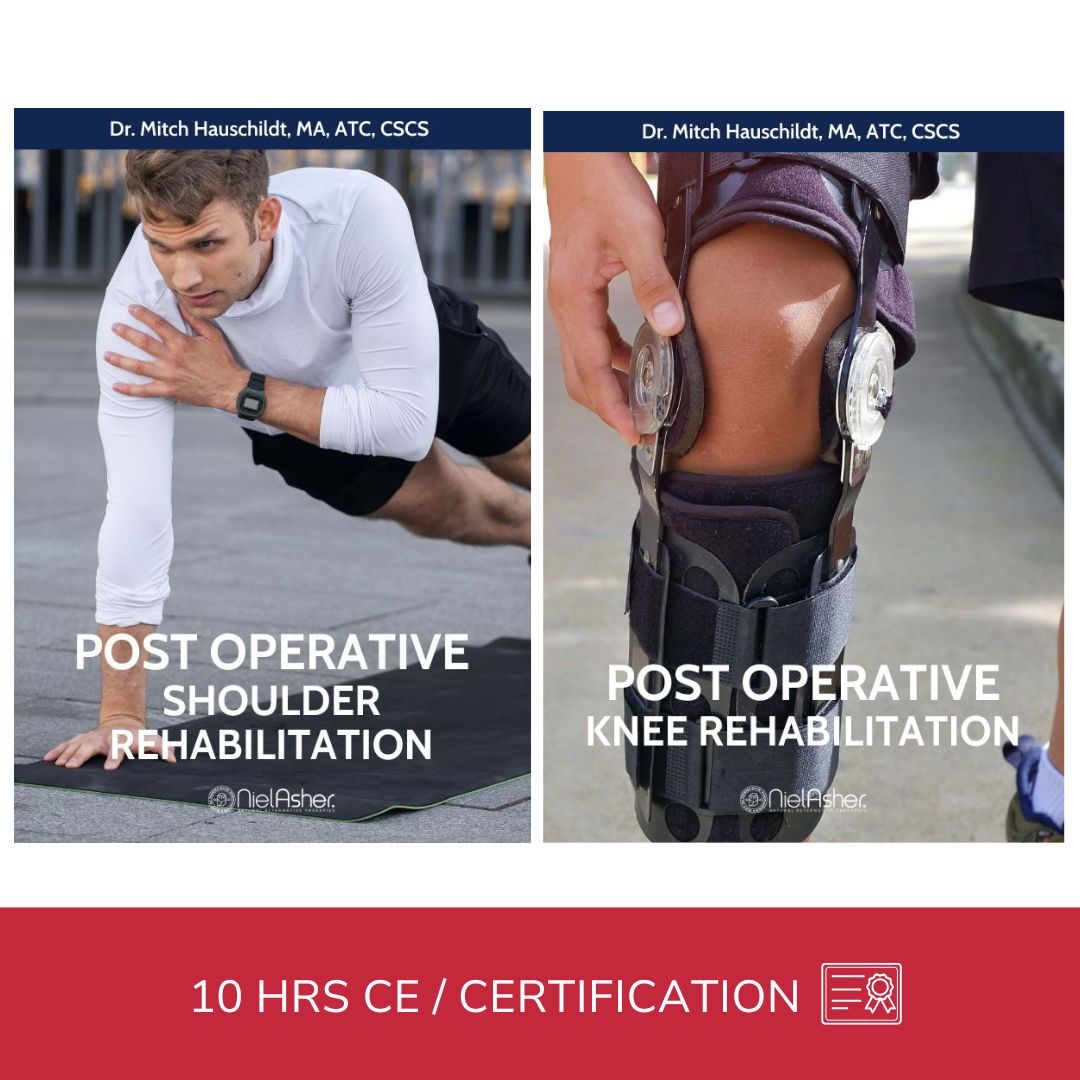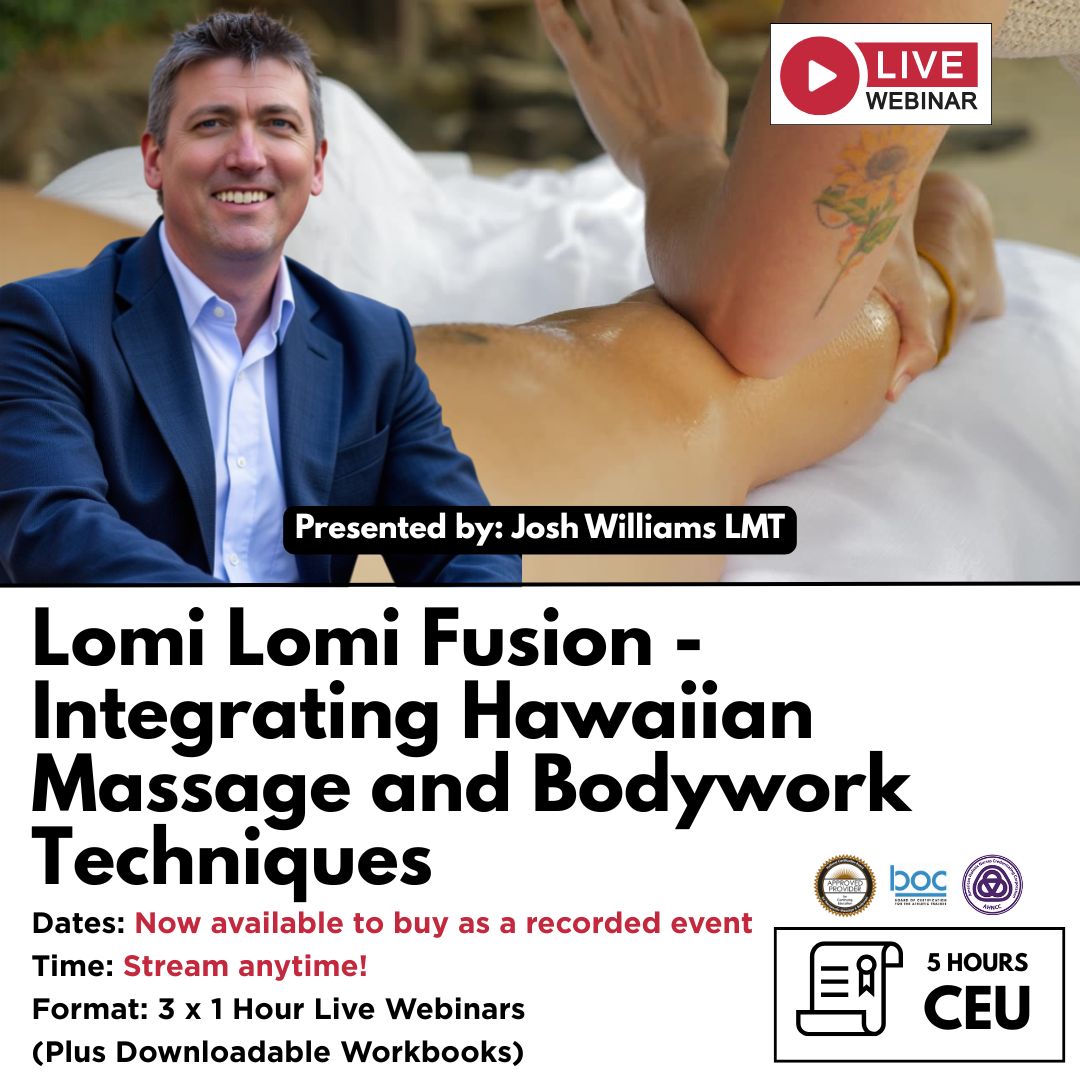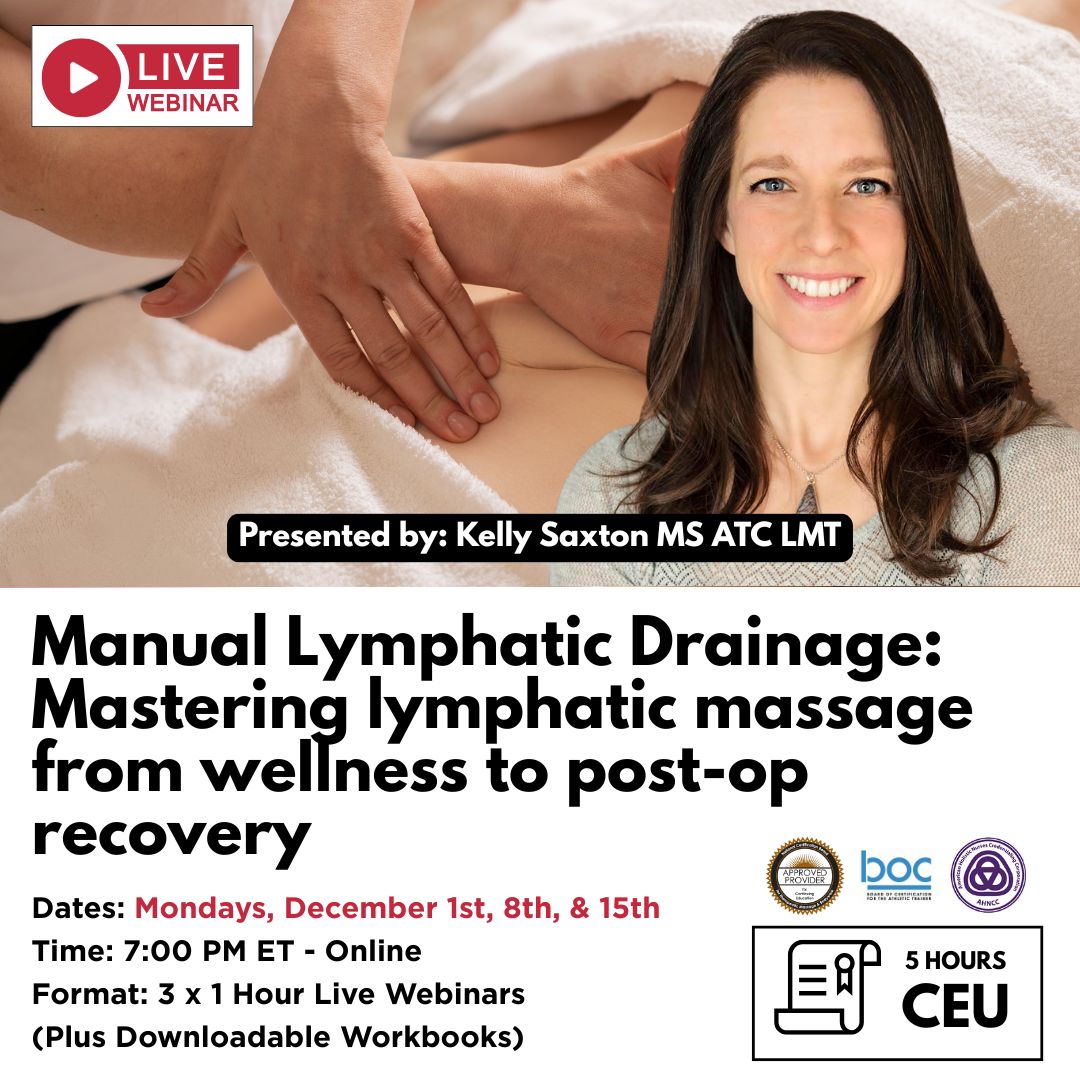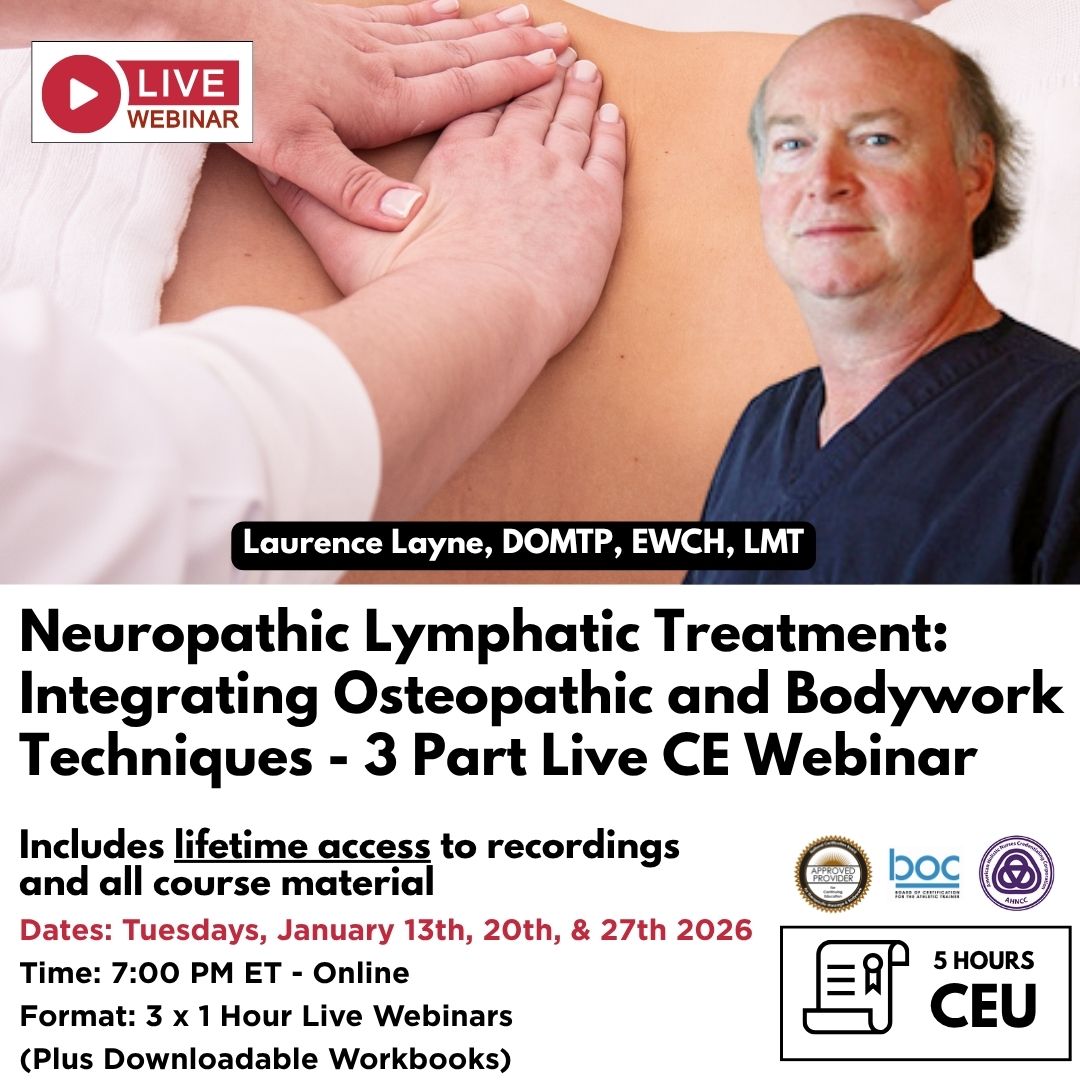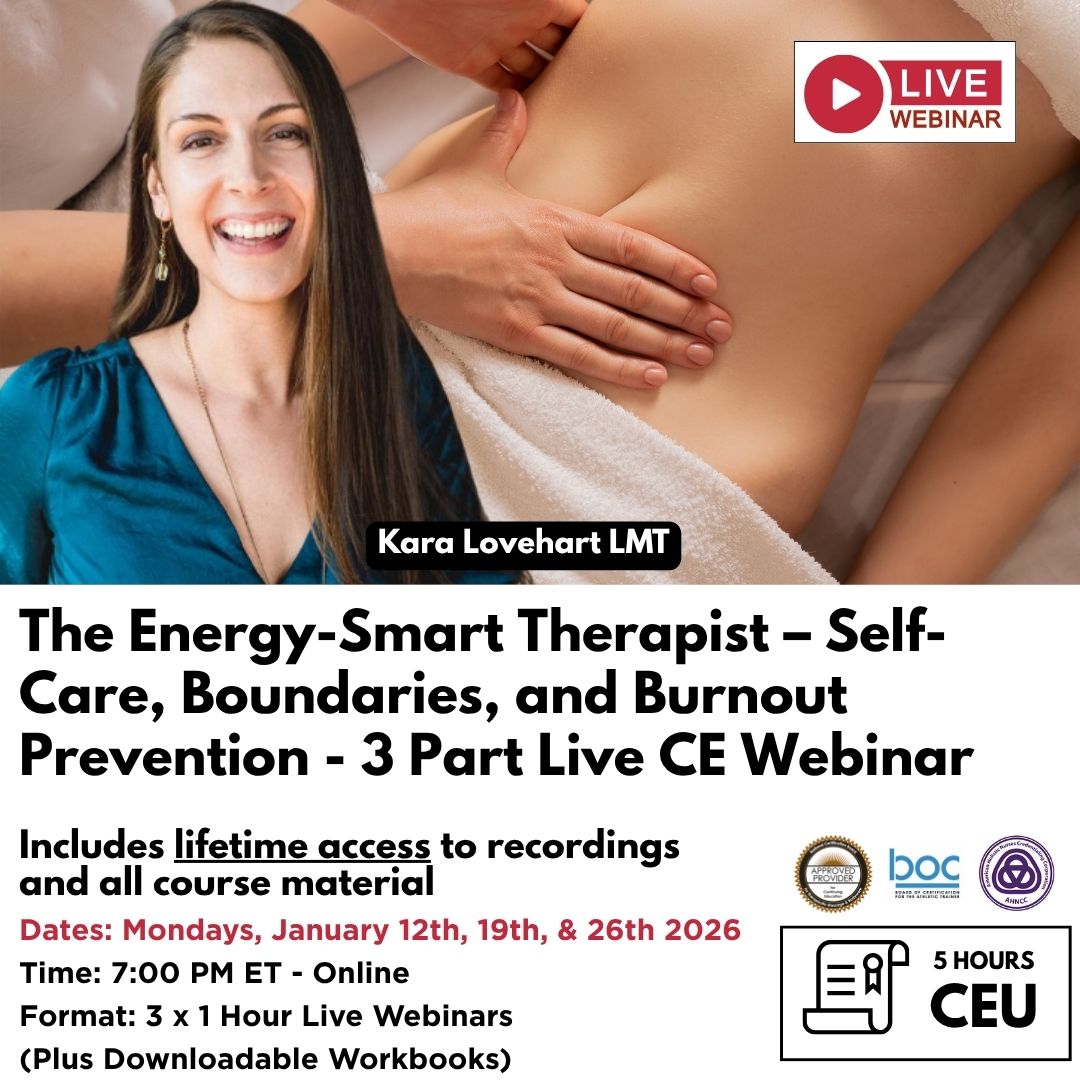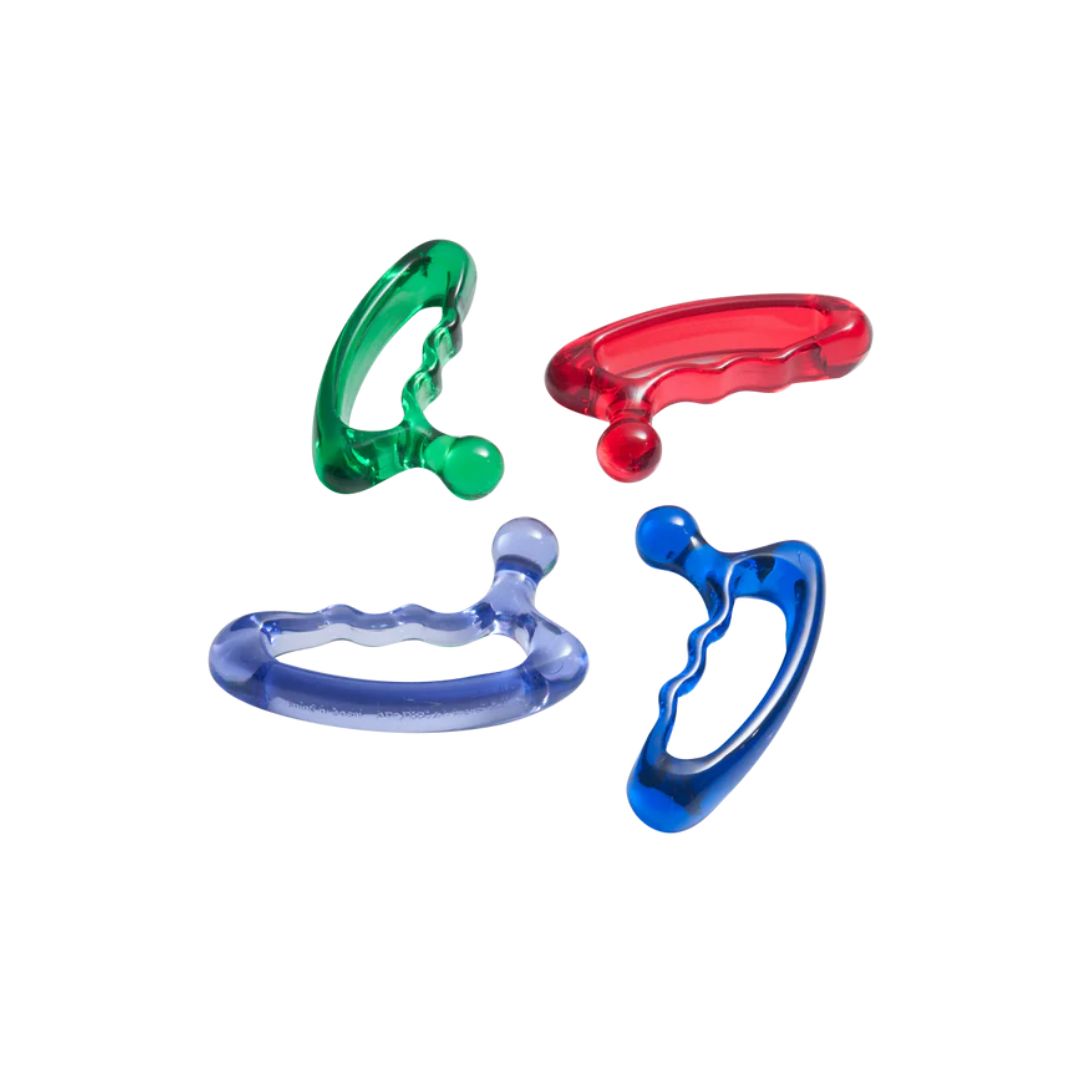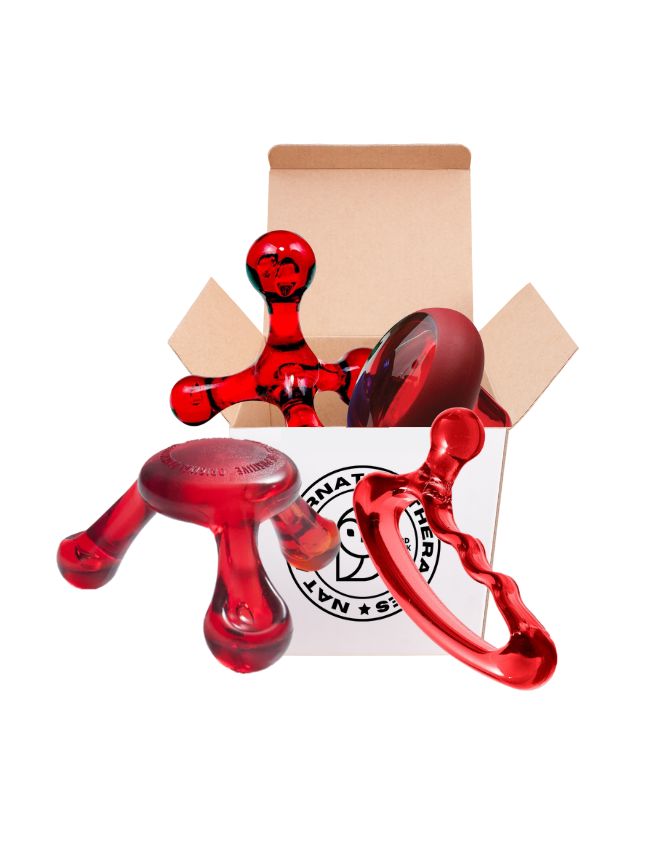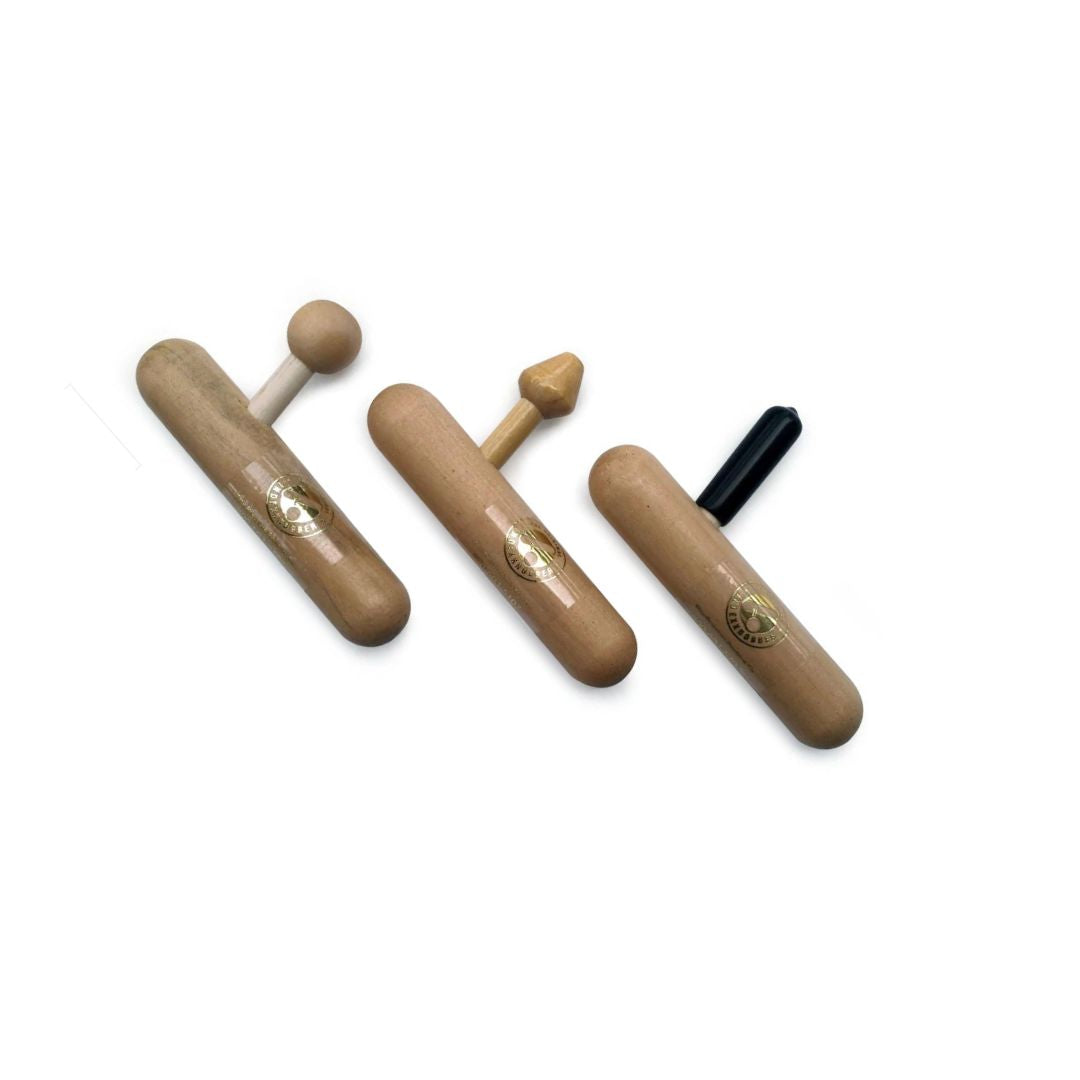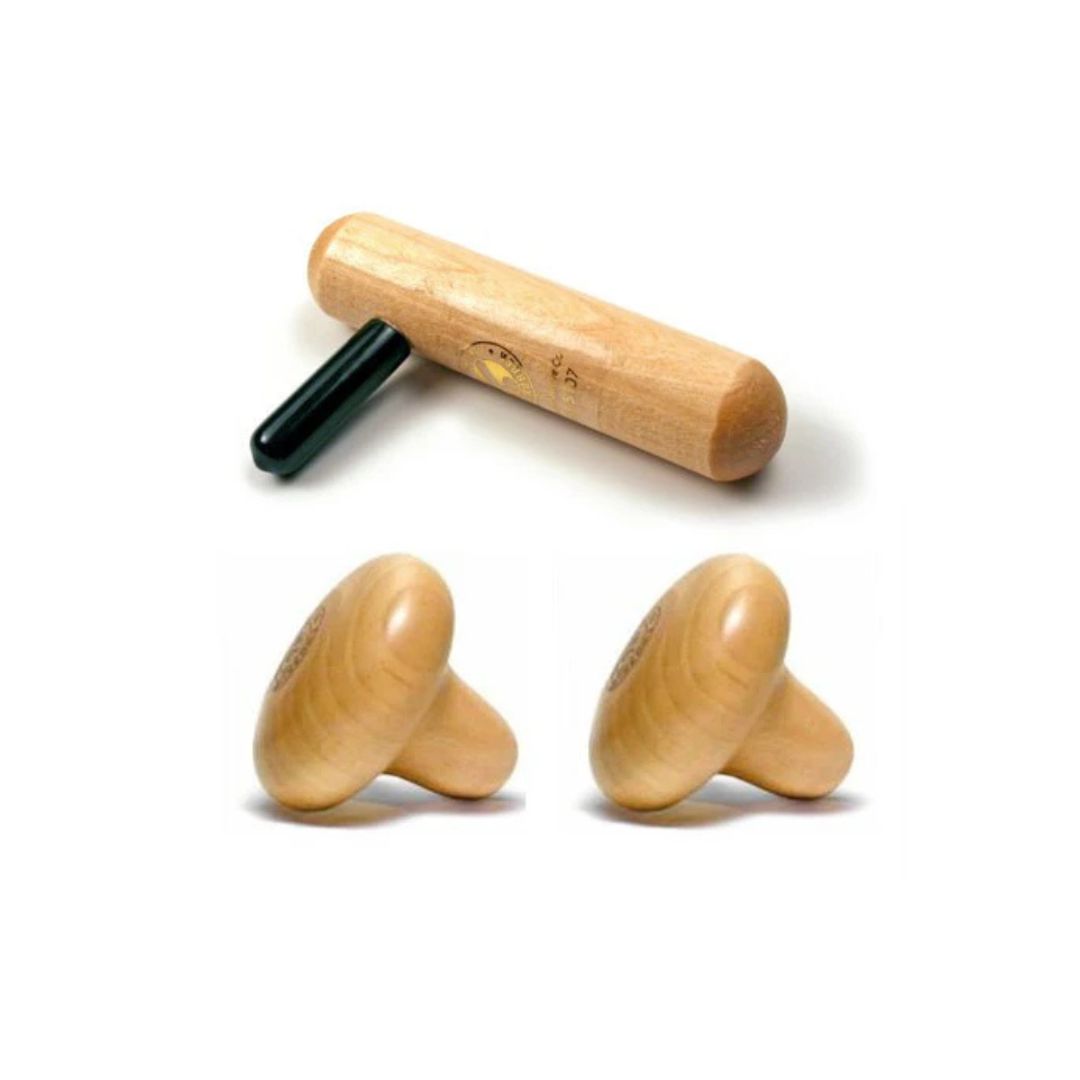Unlocking Your Body's Hidden River: A Deep Dive into Lymphatic Drainage
Fluid Dynamics: Why Lymphatic Drainage is Your Body's Secret Weapon
Have you ever heard your massage therapist mention "lymphatic drainage" and nodded vaguely, pretending you knew exactly what they were talking about? Or perhaps you've seen the term pop up in wellness articles, promising everything from de-puffing to detoxification, leaving you more curious than clear? You're not alone! Lymphatic drainage, often referred to by those in the know as Manual Lymphatic Drainage (MLD), is a truly remarkable therapy. Yet, despite its profound benefits and the significant role it plays in our health, it remains one of the most misunderstood and underappreciated aspects of our body's intricate workings.
Today, we're going to pull back the curtain on this often-overlooked system and the gentle, yet powerful, therapy designed to support it. Get ready to embark on a fascinating journey into the depths of your own body, discovering a hidden river of health that might just be the key to feeling your best.
Part 1: Demystifying the Lymphatic System – Your Body's Hidden Hero
Before we dive into what lymphatic drainage is, let's talk about why it exists. Imagine your body as a bustling city. The circulatory system, with its network of blood vessels, is like the major highway system, delivering vital nutrients and oxygen to every corner. But what about the clean-up crew? What about the drainage system that handles waste and keeps everything sparkling? That, my friends, is your lymphatic system.
It's often called the "forgotten" or "secondary" circulatory system, and for good reason. Unlike your blood, which is pumped around by the powerhouse that is your heart, your lymphatic system doesn't have its own central pump. It relies on your movement, breathing, and muscle contractions to keep things flowing.
So, what exactly is this invisible powerhouse made of?
-
Lymph: This clear, colorless fluid is the star of the show. It's essentially blood plasma that has leaked out of your capillaries into the surrounding tissues, bringing nutrients to cells and picking up waste products. Instead of being reabsorbed directly into the veins, this fluid enters the lymphatic vessels. Think of it as the body's internal recycling fluid, collecting cellular debris, excess fluid, proteins, and even harmful invaders.
-
Lymph Vessels: These are like a vast network of tiny, one-way roads that transport lymph throughout your body. They start as tiny capillaries, intertwining with your blood vessels, and gradually get larger, forming collecting vessels and ducts. They're equipped with one-way valves, just like veins, to prevent backflow and ensure the lymph moves steadily towards the heart.
-
Lymph Nodes: These are small, bean-shaped organs, strategically located along the lymphatic vessels. You have hundreds of them throughout your body, with major clusters in your neck, armpits, and groin. Lymph nodes are like the body's natural filtration plants and immune system checkpoints. They contain specialized immune cells (lymphocytes, macrophages) that filter the lymph, trapping bacteria, viruses, cancer cells, and other harmful substances before the clean lymph is returned to the bloodstream. If you've ever had swollen glands when you're sick, you've experienced your lymph nodes working hard to fight off an infection!
-
Lymphatic Organs: Beyond the vessels and nodes, several other organs play crucial roles in the lymphatic system:
-
Spleen: The largest lymphatic organ, located under your left rib cage. It filters blood, removes old or damaged red blood cells, stores white blood cells, and helps fight infections.
-
Thymus: Located behind your sternum, this gland is vital in childhood for the maturation of T-lymphocytes, a type of white blood cell crucial for adaptive immunity.
-
Tonsils and Adenoids: These lymphatic tissues in your throat and nasal cavity act as a first line of defense against inhaled or ingested pathogens.
-
Bone Marrow: This is where all blood cells, including the lymphocytes that are part of your immune system, are produced.
-
Peyer's Patches: Small masses of lymphatic tissue found in the small intestine, they monitor intestinal bacteria and prevent the growth of pathogenic bacteria.
-
So, what does this hidden hero actually do for you? Its functions are absolutely vital for your overall health:
-
Fluid Balance: It collects excess fluid, proteins, and other substances that leak out of blood capillaries into the interstitial spaces (the spaces between your cells). Without the lymphatic system, this fluid would accumulate, leading to severe swelling (edema). It returns this fluid, along with vital proteins, back to the bloodstream, maintaining proper fluid balance.
-
Waste Removal: It's your body's internal garbage collection system. It picks up cellular waste products, toxins, dead cells, and even larger particles that the venous system can't handle. These are then transported to the lymph nodes for filtering and elimination.
-
Immune Response: This is arguably its most critical role. The lymphatic system is a central part of your immune system. Lymph nodes are packed with white blood cells (lymphocytes, like T-cells and B-cells) that identify and destroy pathogens. When you get sick, these nodes swell as your immune cells multiply and fight off infection. The lymphatic system transports these immune cells to where they're needed, coordinating your body's defense strategy.
-
Fat Absorption: Specialized lymphatic vessels called lacteals in your small intestine absorb dietary fats and fat-soluble vitamins (A, D, E, K) that are too large to enter the blood capillaries directly. These fats are then transported into the bloodstream via the lymphatic system.
Given all it does, it's pretty clear why we should be paying more attention to our lymphatic system. It's a silent, tireless worker, constantly protecting us, maintaining balance, and keeping us clean from the inside out.
Part 2: When Your Lymphatic System Needs a Little Help
So, what happens when this crucial system isn't working optimally? Because it relies on movement and external forces rather than a central pump, the lymphatic system can easily become sluggish. Think of it like a clogged drain – if the flow slows down, waste can build up, and things can get pretty unpleasant.
Here are some signs and conditions that suggest your lymphatic system might be feeling a bit overwhelmed:
-
Swelling (Edema): This is the most obvious sign. If your lymphatic system can't effectively drain excess fluid from your tissues, it accumulates. This can happen anywhere in the body, leading to puffy ankles, hands, face, or general bloating.
-
Lymphedema: This is a more severe and chronic form of swelling, typically in an arm or leg, often resulting from damage to the lymphatic system (e.g., after cancer treatment, surgery involving lymph node removal, or radiation). It can be a debilitating condition that requires ongoing management, and MLD is often a cornerstone of its treatment.
-
Frequent Infections/Weakened Immunity: Since the lymphatic system is central to your immune response, a sluggish system can mean pathogens aren't being filtered effectively, making you more susceptible to colds, flu, and other infections.
-
Fatigue and Low Energy: When your body is struggling to clear waste and maintain fluid balance, it uses more energy. This can leave you feeling chronically tired, sluggish, and generally unwell.
-
Skin Issues: Toxins and waste products that aren't properly eliminated can manifest on the skin. This might include persistent acne, dull complexion, dryness, or even eczema and psoriasis flare-ups.
-
Chronic Pain and Stiffness: Accumulated fluid and inflammation can put pressure on nerves and tissues, contributing to aches, pains, and stiffness, especially in areas like the neck, shoulders, and lower back.
-
Digestive Issues: As the lymphatic system plays a role in absorbing fats and transporting immune cells to the gut, a congested system can sometimes contribute to digestive discomfort, bloating, and nutrient absorption issues.
-
Cellulite: While complex, some theories suggest that impaired lymphatic flow can contribute to the appearance of cellulite by allowing fluid and waste to accumulate in fat cells and connective tissue.
It's important to note that many of these symptoms can also be indicative of other health issues, so it's always wise to consult with a healthcare professional. However, if you experience a combination of these signs, it's worth considering that your lymphatic system might benefit from some support.
Part 3: Enter Manual Lymphatic Drainage (MLD) – A Gentle Touch with Powerful Results
So, how do we give this hardworking system the boost it needs? This is where Manual Lymphatic Drainage (MLD) comes in. MLD is a specialized, gentle form of bodywork that aims to encourage the natural drainage of lymph, which carries waste products away from the tissues and back towards the heart.
MLD was developed in the 1930s by Dr. Emil Vodder and his wife Estrid, a Danish couple who observed its effectiveness in treating chronic sinusitis and other immune disorders. Since then, it has evolved into a globally recognized and medically approved therapy, particularly crucial for managing lymphedema.
What makes MLD so unique? It's all about the touch.
Unlike traditional massage, which often involves deep pressure to manipulate muscles and connective tissues, MLD uses a very light, rhythmic, and highly specific touch. Imagine the weight of a nickel or a feather gliding across your skin – that's often the depth of pressure applied. The strokes are slow, repetitive, and follow the natural direction of lymph flow, towards the lymph nodes and then towards the major lymphatic ducts.
Here's why that gentle touch is so crucial:
The lymphatic vessels are incredibly superficial – they lie just beneath the skin. Applying too much pressure would collapse these delicate vessels, hindering rather than helping the flow of lymph. MLD therapists are trained to:
-
Stretch the skin: The strokes gently stretch the skin in the direction of lymph flow, creating a slight suction effect that encourages lymph to enter the initial lymphatic capillaries.
-
Rhythm and Frequency: The movements are precise, creating a wave-like action that gently pushes lymph through the vessels and past the one-way valves.
-
Targeted Approach: A skilled MLD therapist will have an in-depth knowledge of lymphatic pathways and the location of lymph nodes. They will often start by clearing the central lymphatic areas (like the neck and armpits) to create a "decompression" effect before working on more distal areas. This ensures that when lymph is moved from the periphery, it has a clear path to follow.
It's not just a light massage; it's a physiological process. The goal isn't to relax muscles (though relaxation is a lovely side effect!). The primary aim is to stimulate the lymphatic capillaries and vessels, increasing their contractile activity and accelerating the transport of lymph fluid.
How is it different from a regular massage?
This is a really important distinction!
-
Pressure: MLD is extremely light. Deep tissue massage uses significant pressure to release muscle tension.
-
Direction: MLD strokes follow specific anatomical pathways, always guiding lymph towards the nodes and drainage points. Regular massage can use various directions.
-
Rhythm: MLD is slow, repetitive, and rhythmic to mimic the natural pulse of the lymphatic vessels. Regular massage can vary in pace.
-
Goal: MLD's primary goal is to decongest the lymphatic system and promote fluid movement. Regular massage's primary goal is usually muscle relaxation, pain relief, and breaking up adhesions.
If you're expecting the satisfying "ouch" of a deep tissue knot release, MLD will feel quite different. It's often described as incredibly soothing, even hypnotic, which makes sense given its impact on the nervous system.
Part 4: The Incredible Benefits of Lymphatic Drainage
Now that we understand the system and the therapy, let's talk about the amazing ways MLD can benefit your health and well-being. The scope is far broader than just addressing swelling!
-
Powerful Edema and Lymphedema Reduction: This is MLD's most well-known and scientifically supported application. For individuals struggling with post-surgical swelling (e.g., after knee replacement, liposuction, cosmetic surgery), injury-related swelling (sprains, strains), or chronic lymphedema, MLD is often prescribed to significantly reduce fluid retention and prevent complications.
-
Immune System Boost: By encouraging the flow of lymph, MLD helps transport waste products and pathogens to the lymph nodes, where immune cells can neutralize them. This effectively "cleanses" the immune system, making it more efficient and resilient. Regular MLD can help those who frequently get sick or feel their immune system is compromised.
-
Enhanced Detoxification: Think of MLD as giving your body's natural detox system a powerful helping hand. It supports the removal of metabolic waste products, cellular debris, and environmental toxins that accumulate in your tissues. This can lead to a feeling of lightness and increased vitality.
-
Accelerated Healing and Scar Reduction: For pre- and post-surgical patients, MLD can dramatically speed up recovery. By reducing swelling and inflammation around surgical sites, it can minimize bruising, accelerate tissue regeneration, and improve the appearance and flexibility of scars. It helps flush out the cellular byproducts of healing, allowing fresh nutrients to enter.
-
Relief from Chronic Pain Conditions: Conditions like fibromyalgia, chronic fatigue syndrome, and rheumatoid arthritis often involve systemic inflammation and fluid retention. MLD's gentle action can reduce inflammation, ease pain, and improve comfort for those living with chronic discomfort. Its impact on the nervous system also contributes to pain modulation.
-
Profound Relaxation and Stress Reduction: The gentle, rhythmic nature of MLD has a deeply calming effect on the nervous system. It shifts your body into a "rest and digest" (parasympathetic) state, reducing stress hormones and promoting a sense of peace and well-being. Many people fall asleep during sessions.
-
Improved Skin Health and Appearance: For those dealing with skin issues like acne, rosacea, or puffiness (especially around the eyes and face), MLD can be transformative. By reducing inflammation, clearing toxins, and promoting healthy fluid circulation, it can lead to a clearer, brighter, and more even complexion. It can also help minimize the appearance of fine lines and improve overall skin tone by promoting cellular nourishment.
-
Support for Digestive Health: While not a direct treatment for specific digestive diseases, by reducing abdominal fluid retention and promoting overall detoxification, MLD can indirectly support a healthier gut environment and alleviate symptoms like bloating.
-
Athletic Recovery and Performance: Athletes, from weekend warriors to professionals, can benefit greatly. MLD helps flush out lactic acid and other metabolic waste accumulated during intense exercise, reducing muscle soreness, speeding up recovery time, and potentially enhancing performance by allowing muscles to function more efficiently.
-
Migraine and Sinus Headache Relief: For some individuals, MLD can help alleviate the pressure and congestion associated with migraines and chronic sinus headaches by reducing fluid buildup in the head and neck region.
As you can see, the benefits are diverse and far-reaching, touching almost every aspect of your health.
Part 5: Who Can Benefit from Lymphatic Drainage?
Given its wide array of benefits, a surprising number of people can find significant relief and improvement through MLD. It's not just for those with severe medical conditions!
Here's a breakdown of who often seeks out and benefits from lymphatic drainage:
-
Individuals with Lymphedema: This is the most crucial group. MLD is a cornerstone of Complete Decongestive Therapy (CDT) for primary and secondary lymphedema. It helps manage swelling, reduce the risk of infection, and improve quality of life.
-
Pre- and Post-Surgical Patients:
-
Cosmetic Surgery: Liposuction, tummy tucks, facelifts, breast augmentation/reduction. MLD significantly reduces post-surgical swelling, bruising, and discomfort, leading to faster healing and better aesthetic outcomes.
-
Orthopedic Surgery: Knee replacements, hip replacements, shoulder surgeries. MLD minimizes post-operative edema, helping to restore range of motion and reduce pain.
-
Cancer Surgeries (especially with lymph node removal): Crucial for preventing or managing lymphedema and aiding recovery.
-
-
People with Chronic Swelling or Edema: Even without a formal lymphedema diagnosis, many people experience chronic puffiness in their legs, feet, hands, or face due to prolonged standing, sitting, travel, or certain medications. MLD can provide much-needed relief.
-
Individuals with Chronic Inflammatory Conditions: Those with fibromyalgia, chronic fatigue syndrome, rheumatoid arthritis, lupus, or other autoimmune conditions often experience less pain, reduced inflammation, and increased energy with regular MLD.
-
Those Seeking Detoxification and Immune Support: If you feel sluggish, prone to illness, or simply want to support your body's natural cleansing processes, MLD can be a wonderful addition to your wellness routine.
-
Athletes: For enhanced recovery after intense workouts, marathons, or competitive events, MLD helps clear metabolic waste and reduce muscle soreness.
-
People with Skin Conditions: From persistent acne and rosacea to post-surgical scarring, MLD can improve skin health by reducing inflammation and promoting circulation.
-
Pregnant Women (with caution and doctor's approval): MLD can help alleviate common pregnancy-related swelling in the legs and feet. Always consult with your healthcare provider first.
-
Anyone Experiencing Stress, Anxiety, or Sleep Issues: The deeply relaxing nature of MLD can be incredibly beneficial for calming the nervous system, promoting better sleep, and reducing overall stress.
-
Individuals with Sinus Congestion or Headaches: By gently draining fluid from the facial and neck areas, MLD can offer relief from sinus pressure and certain types of headaches.
It's clear that MLD isn't just for a niche group; it's a versatile therapy that can support a wide spectrum of health and wellness goals.
Part 6: What to Expect During an MLD Session
So, you're curious and ready to try it! What's an MLD session actually like? Prepare for a surprisingly gentle, yet deeply effective experience.
-
Initial Consultation: A good MLD therapist will always start with a thorough consultation. They'll ask about your medical history, any specific conditions you're experiencing (like swelling or pain), your lifestyle, and your goals for the session. This helps them tailor the treatment to your unique needs and identify any contraindications (reasons why MLD might not be suitable for you).
-
The Environment: You'll typically lie on a massage table, usually in a quiet, warm, and comfortable room. You may be partially or fully undressed, draped appropriately, just like a regular massage, but many MLD sessions can also be done over light clothing if preferred or necessary for certain conditions.
-
The Touch – It's Surprisingly Light! This is where MLD truly differs. If you're used to deep tissue work, the initial touch might feel almost imperceptible. Your therapist will use very light, rhythmic, stretching motions on your skin, never causing pain or deep pressure. They are literally just moving the skin, not pushing into the muscle.
-
The Rhythm and Flow: The strokes are slow, deliberate, and highly repetitive. A trained therapist will follow the specific pathways of your lymphatic vessels, gently guiding the lymph towards the nearest healthy lymph nodes. They often start by opening up the "terminus" areas (where lymph returns to the bloodstream, like in the neck) and then work outward.
-
The Feeling: Most people find MLD incredibly relaxing. It's common to fall asleep during a session, as the gentle rhythm and activation of the parasympathetic nervous system induce a profound state of calm. You won't feel "knots" being worked out, but rather a subtle, almost hypnotic, sensation as the fluid starts to move.
-
Session Length: A typical MLD session can range from 60 to 90 minutes, depending on your needs and the areas being addressed. For specific medical conditions like lymphedema, initial treatments might be shorter but more frequent.
-
Post-Session Effects:
-
Relaxation: You'll likely feel very relaxed, perhaps even a bit sleepy.
-
Increased Urination: It's common to need to urinate more frequently after a session, as your body is effectively flushing out excess fluid and waste. This is a good sign that the therapy is working!
-
Thirst: You might feel increased thirst, so it's important to drink plenty of water to help your body continue the flushing process.
-
Temporary Fatigue: Some people experience a mild, temporary fatigue as their body processes the changes.
-
Reduced Swelling/Improved Comfort: Over the next few hours and days, you should notice a reduction in swelling, puffiness, and an overall feeling of lightness and improved comfort.
-
It's truly an experience that encourages you to tune into your body's subtle processes and appreciate the power of gentle healing.
Part 7: Empowering Yourself: Self-Care for Your Lymphatic System
While professional MLD sessions are incredibly beneficial, there's a lot you can do in your daily life to support your lymphatic system and keep that river flowing smoothly. Remember, it doesn't have a pump, so it relies on you!
-
Stay Hydrated: This is foundational! Lymph is mostly water. If you're dehydrated, your lymph becomes thicker and moves less efficiently. Aim for plenty of clean, filtered water throughout the day. Herbal teas can also contribute.
-
Move Your Body (Gently and Consistently): Muscle contractions are key to lymph flow. You don't need to be a marathon runner.
-
Walking: A brisk walk is excellent.
-
Stretching: Gentle stretching, especially full-body movements, helps.
-
Yoga/Pilates: These practices incorporate deep breathing and gentle movements that are highly beneficial.
-
Rebounding: Jumping on a mini-trampoline (rebounder) is often touted as one of the best ways to stimulate lymphatic flow due to the unique up-and-down motion. Even just a few minutes a day can make a difference.
-
Swimming: The pressure of the water can also aid lymphatic movement.
-
-
Deep Diaphragmatic Breathing: This is perhaps the simplest and most powerful daily lymphatic booster. Your diaphragm acts like a pump for the thoracic duct, one of the largest lymphatic vessels.
-
How to do it: Lie down or sit comfortably. Place one hand on your chest and the other on your belly. As you inhale, feel your belly rise, keeping your chest relatively still. As you exhale, feel your belly fall. Focus on making your exhales longer than your inhales (as David Lobenstein mentioned!). This deep, belly breathing creates internal pressure changes that powerfully milk the lymphatic system. Practice for 5-10 minutes daily.
-
-
Dry Brushing: This ancient technique involves gently brushing your dry skin with a natural bristle brush before showering.
-
How to do it: Use long, sweeping strokes towards your heart, starting from your feet and hands. The light pressure stimulates the superficial lymphatic vessels just beneath the skin, encouraging lymph flow. It also exfoliates the skin!
-
-
Eat a Whole Foods Diet: A diet rich in fresh fruits, vegetables, and lean proteins provides the nutrients your body needs to function optimally and reduces the toxic load on your system. Minimize processed foods, excessive sugar, and unhealthy fats, which can contribute to inflammation and sluggishness.
-
Manage Stress: Chronic stress leads to inflammation and can impair lymphatic function. Incorporate stress-reducing practices into your daily life: meditation, mindfulness, spending time in nature, hobbies, or simply deep breathing.
-
Wear Loose Clothing (Avoid Constriction): Tight clothing, especially around the groin, waist, and armpits, can restrict lymphatic flow. Opt for comfortable, breathable fabrics.
-
Elevate Limbs (if prone to swelling): If you experience swelling in your legs or feet, elevating them above your heart for 15-20 minutes a few times a day can help gravity assist lymphatic drainage.
-
Hot and Cold Showers (Contrast Hydrotherapy): Alternating between hot and cold water in the shower can cause blood vessels to constrict and dilate, creating a "pumping" action that can stimulate lymphatic flow. (Consult a doctor if you have heart conditions).
By incorporating even a few of these self-care practices into your routine, you can significantly support your lymphatic system and feel the difference.
Part 8: Finding Your Lymphatic Drainage Expert
Because MLD is such a specialized technique, it's crucial to seek out a qualified and properly trained therapist. This isn't something every massage therapist is equipped to do, and applying MLD incorrectly can be ineffective or even harmful in certain cases.
Here's what to look for and questions to ask:
-
Specialized Certification: Look for therapists who have undergone specific, comprehensive training and certification in Manual Lymphatic Drainage. Reputable programs include those based on the Vodder, Leduc, Casley-Smith, or Foldi methods. These programs involve hundreds of hours of specialized training beyond standard massage therapy education.
-
CLT (Certified Lymphedema Therapist): For those with lymphedema, specifically look for a CLT. These are therapists (often physical therapists, occupational therapists, or massage therapists) who have completed intensive training in Complete Decongestive Therapy, which includes MLD, compression bandaging, skin care, and therapeutic exercises.
-
Experience: Ask about their experience, particularly with your specific condition or goals.
-
Referrals: Ask your doctor, surgeon, or other healthcare providers for referrals, especially if you're recovering from surgery or managing a medical condition.
-
Professional Associations: Check with national or international lymphedema or lymphatic therapy associations, as they often have directories of certified therapists.
-
Ask Questions: Don't hesitate to ask your potential therapist about their training, their approach, and how they plan to address your needs. A good therapist will be happy to explain their methods.
A properly trained MLD therapist understands the anatomy and physiology of the lymphatic system, knows the specific strokes, pressure, and sequence required, and can adapt the treatment to your individual health status. Your health is worth investing in expert care.
Part 9: Important Considerations and Misconceptions
While MLD is incredibly beneficial, it's not a magic bullet, and there are situations where it might not be appropriate. Understanding these nuances is important.
When MLD is NOT Recommended (Contraindications):
Always inform your therapist about your full medical history. MLD should generally be avoided or approached with extreme caution in cases of:
-
Acute Infections: MLD could potentially spread the infection.
-
Acute Deep Vein Thrombosis (DVT) or Thrombophlebitis: Moving a blood clot could be life-threatening.
-
Acute Congestive Heart Failure: MLD can increase the fluid load on the heart, which could be dangerous.
-
Kidney Failure (certain stages): Similar to heart failure, the body may not be able to process the increased fluid.
-
Undiagnosed Malignant Tumors: MLD could theoretically spread cancer cells, although this risk is debated, it's best to err on the side of caution until a diagnosis is made.
-
Acute Inflammation (e.g., severe arthritis flare-up): May worsen symptoms.
-
Major Arterial Obstructions: Due to potential for dislodging plaque.
This is not an exhaustive list, so always discuss your health with your MLD therapist and your doctor.
Common Misconceptions:
-
It's a Weight Loss Solution: While MLD can reduce fluid retention and make you feel less "puffy," it's not a direct weight-loss treatment. It addresses fluid, not fat. Any weight loss you experience is likely due to the reduction of excess lymphatic fluid.
-
It's a "Detox Cure-All": While MLD supports your body's natural detoxification pathways, it won't miraculously remove years of toxins from an unhealthy lifestyle. It works best as part of a holistic approach to health.
-
It's Just a "Light Massage": As we've discussed, it's far more than that. It's a precise, scientific therapy with specific physiological goals, requiring specialized training.
-
It's a Painful Process: Quite the opposite! MLD should never be painful. If you experience discomfort, your therapist might be applying too much pressure, or it could indicate an underlying issue that needs to be addressed.
-
Anyone Can Do It: No, they can't. Proper MLD requires extensive knowledge of anatomy, physiology, and specific techniques. A regular massage therapist without specialized MLD training is not qualified to perform it.
Conclusion: Your Body's River of Health Awaits
The lymphatic system is truly a masterpiece of internal engineering, tirelessly working to maintain fluid balance, fight off invaders, and keep your body clean and vibrant. It's a silent partner in your health, often overlooked until it starts to show signs of struggle.
Manual Lymphatic Drainage offers a gentle, yet profoundly effective, way to support this vital system. Whether you're recovering from surgery, battling chronic swelling, seeking an immune boost, aiming for clearer skin, or simply looking for a deeper level of relaxation and well-being, MLD might just be the missing piece in your health puzzle.
By understanding how your lymphatic system works and embracing practices that support its flow – from the expert touch of a certified MLD therapist to simple daily habits like hydration and deep breathing – you can unlock a greater sense of vitality, lightness, and resilience.
So, the next time you hear "lymphatic drainage," you won't just nod vaguely. You'll know you're talking about a sophisticated system and a remarkable therapy that can help your body's hidden river flow freely, nourishing your health from the inside out. Consider exploring it for yourself – your lymphatic system will thank you!
References
-
Foldi, M., & Foldi, E. (2012). Foldi's Textbook of Lymphology for Physicians and Lymphedema Therapists (3rd ed.). Elsevier Urban & Fischer.
-
This is a foundational textbook in lymphology and MLD, covering the anatomy, physiology, pathology, and treatment of the lymphatic system and lymphedema.
-
-
Mortimer, P. S., & Badger, C. (2007). Lymphedema: Clinical Management and Physical Therapy Interventions. Thieme Medical Publishers.
-
A comprehensive text on lymphedema, including detailed sections on MLD techniques and their application.
-
-
National Lymphedema Network (NLN). Position Papers. Retrieved from https://lymphnet.org/
-
The NLN is a leading resource for information and advocacy related to lymphedema. Their position papers provide evidence-based guidelines and information on diagnosis and treatment, including MLD.
-
-
The Lymphatic Education & Research Network (LE&RN). About the Lymphatic System. Retrieved from https://www.lymphaticnetwork.org/
-
LE&RN offers extensive information on lymphatic diseases and the lymphatic system, including research, education, and patient resources.
-
-
Vodder, E. (1936). Le Drainage Lymphatique: Une Nouvelle Méthode Thérapeutique. Paris: Vigot Frères.
-
This is the original work by Dr. Emil Vodder, who developed Manual Lymphatic Drainage. While the original is in French, its principles are widely taught and form the basis of modern MLD.
-
-
Wittlinger, H., & Wittlinger, A. (2004). Textbook of Dr. Vodder's Manual Lymph Drainage: A Practical Guide. Thieme Medical Publishers.
-
This textbook details the specific Vodder technique of MLD, widely regarded as the foundational method for lymphatic drainage.
-
-
Rockson, S. G., & Rivera, K. (2008). Lymphedema: new insights into pathogenesis and treatment. Journal of Clinical Investigation, 118(3), 820–829.
-
This article provides a scientific overview of lymphedema, touching upon the mechanisms and various treatment approaches.
-
-
Vairo, G. L., Imagery, L. A., & Coats, J. D. (2019). Manual Lymphatic Drainage in the Management of Post-Traumatic Edema. Sports Health: A Multidisciplinary Approach, 11(2), 127–134.
-
An article discussing the application and benefits of MLD in reducing post-traumatic edema in sports injuries.
-
-
Department of Health & Human Services, State Government of Victoria, Australia. Lymphedema Manual: Understanding and Managing Lymphedema.
-
Many government health organizations and reputable cancer treatment centers provide guidelines and information on lymphedema and the role of MLD in its management.
-
-
Mayo Clinic. Lymphedema. Retrieved from https://www.mayoclinic.org/diseases-conditions/lymphedema/symptoms-causes/syc-20374682
-
A trusted medical source providing general information on lymphedema, its causes, symptoms, and treatment options, including MLD.
-
Disclaimer
The information in this article is intended for educational purposes within the context of continuing education for massage therapists, continuing education for athletic trainers, continuing education for physical therapists, continuing education for chiropractors, and continuing education for rehabilitation professionals. It is not a substitute for medical advice, diagnosis, or treatment. Although every effort has been made to ensure accuracy and reflect current understanding at the time of publication, practitioners must always work within the legal scope of their professional practice and follow all regional regulatory guidelines.
Hands-on techniques and clinical applications described in this material should only be performed by appropriately trained and licensed professionals. Individuals experiencing pain or symptoms should be referred to a qualified healthcare provider for assessment. Niel Asher Education is not responsible for any injury, loss, or damage resulting from the use or misuse of the information provided in this content.
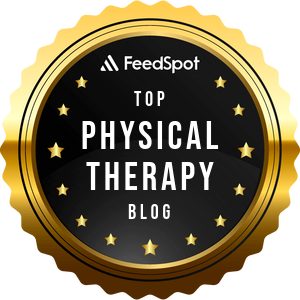
Continuing Professional Education
Looking for Massage Therapy CEUs, PT and ATC continuing education, chiropractic CE, or advanced manual therapy training? Explore our evidence-based online courses designed for hands-on professionals.



